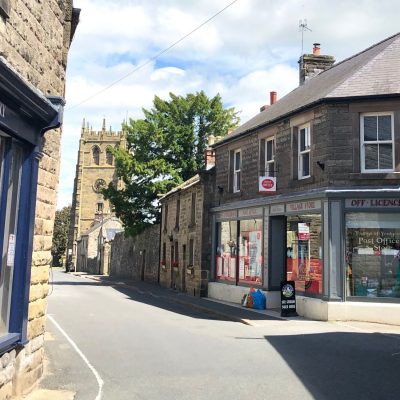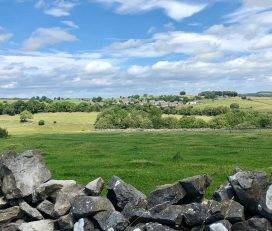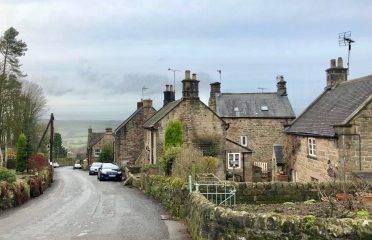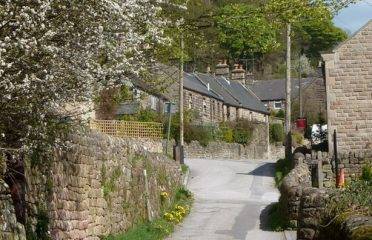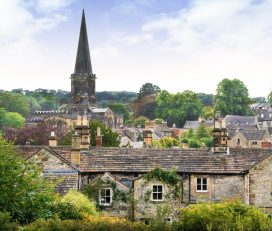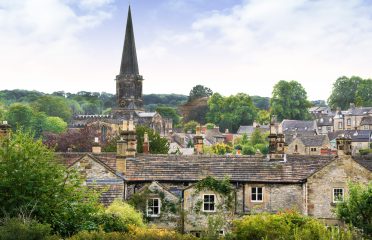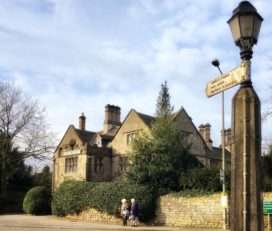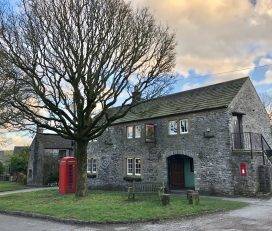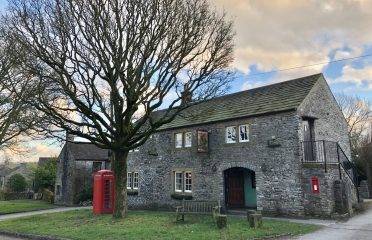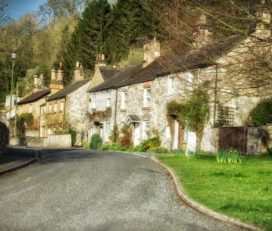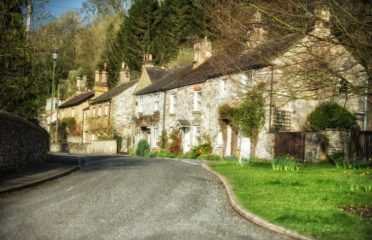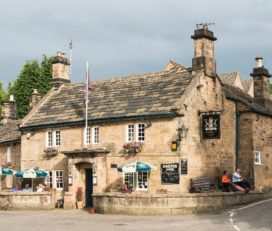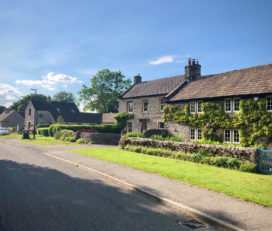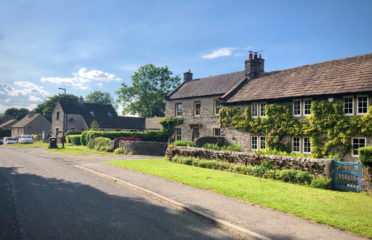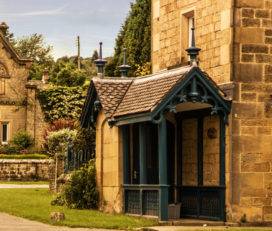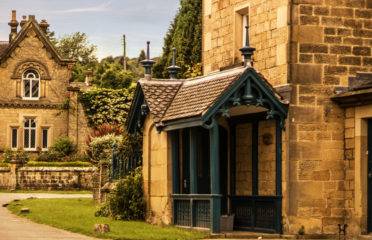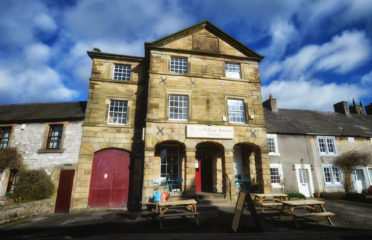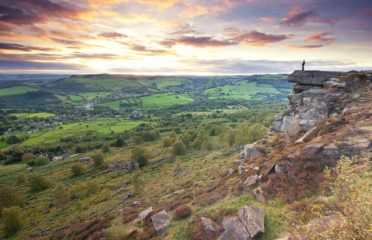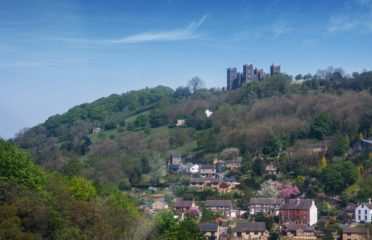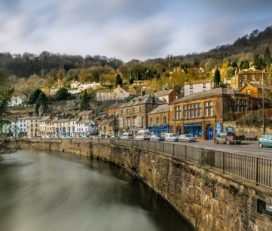Beautiful Youlgreave
The beautiful village of Youlgreave or Youlgrave (more on that later) is one of the largest villages in the Peak District. It’s a lovely place with history around every corner, and it’s surrounded on all sides by the most stunning countryside.

Youlgreave stands on a limestone shelf above the confluence of Lathkill Dale and Bradford Dale, with the crystal-clear rivers running through the valleys below. The wide grassy banks of the River Bradford make a perfect picnicking spot.
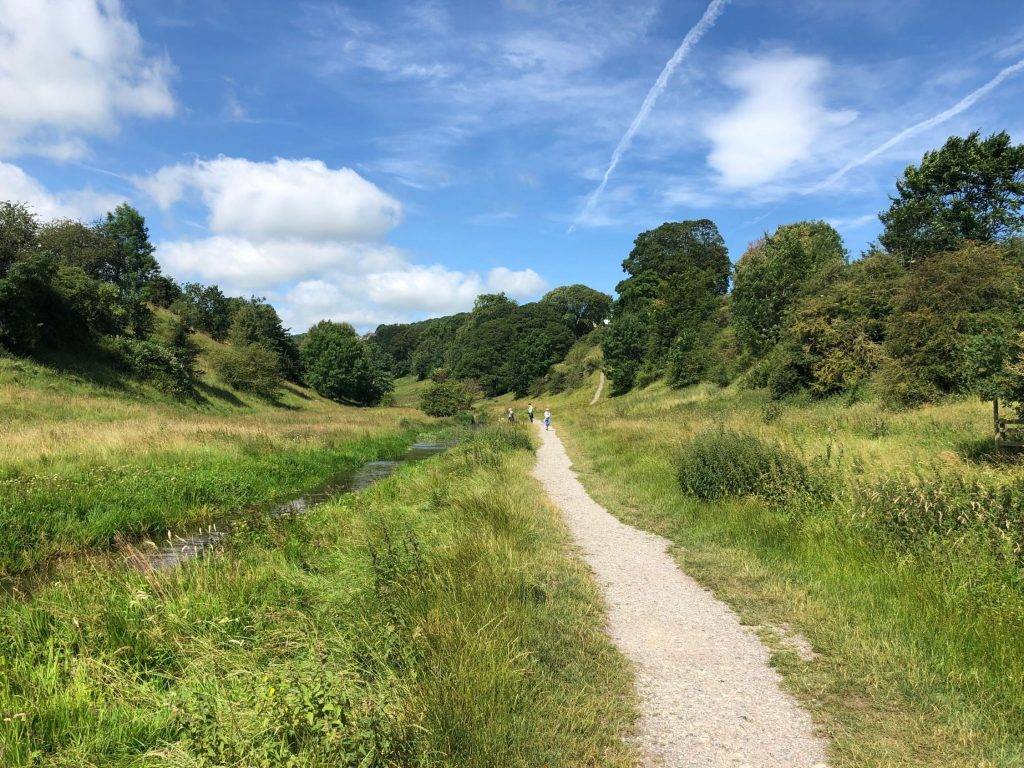
Historic Youlgreave
There is significant evidence of early human activity in the area around Youlgreave, and a number of archaeological artefacts found locally date from the early Neolithic to the late Bronze Age. The Neolithic henge of Arbor Low, one of the largest in England, is situated only 3 miles west of the village.
The beautiful All Saints’ Church, dating from 1130, is a magnificent building that still dominates the village. It has an unusual Norman font, carved with a salamander, and a stained glass window made by William Morris to a design by Edward Burne-Jones.

There are a number of other ancient buildings still standing in the village, including the quaint Thimble Hall (c 1650), listed in the Guinness Book of World Records as the world’s smallest detached house. Each room is less than 8 feet square and there is a fixed ladder up to the bedroom. It was home to a family of eight people 100 years ago and was last inhabited in the 1930s.
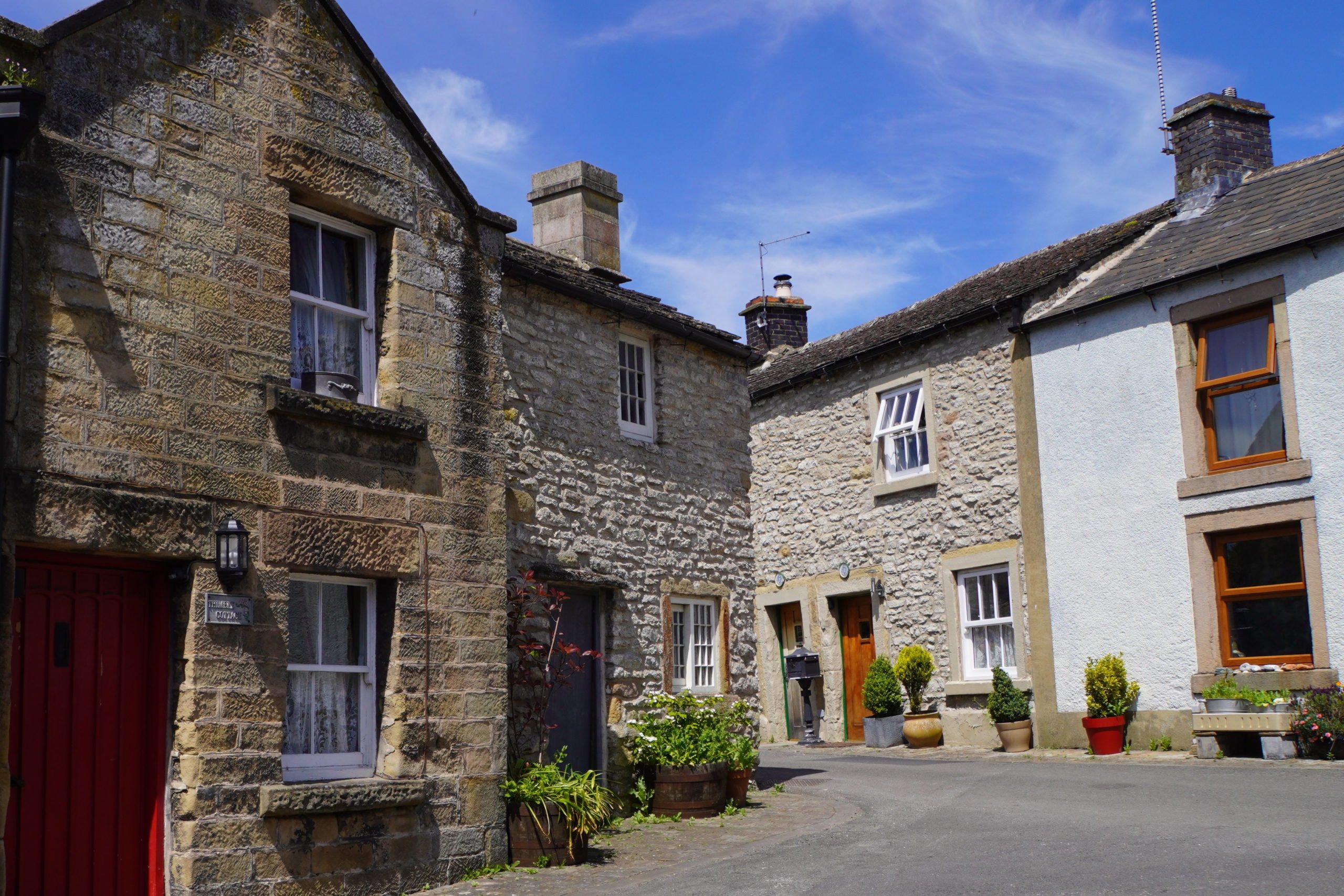
Also worthy of exploration for history enthusiasts is Old Hall Farm, built in 1630, Old Hall (built around 1650), and the Bull’s Head pub (1675), a former coaching inn.
The Youlgrave Co-operative Society was formed in 1870, operating from an elegant, three-storey stone building. The building housed various departments on its upper floors, with storage below. The Co-operative Society supplied electricity to the village from 1910 until the electricity industry was nationalised. The building still stands, and is now home to the Youlgreave Youth Hostel.

Mawstone Mine
Youlgreave was once an important centre for lead mining. Mawstone Mine, located less than a mile south of the village, provided much of the employment for the village men, and by the 19th Century almost 60% of the working male population was employed in the mine.
Although the lead mining industry throughout Derbyshire declined from the 1860s, Mawstone Mine continued to employ a significant number of local men until well into the 20th Century, and in fact mining activity increased there after the First World War in anticipation of increase demand after the war.
Tragically, however, an explosion in the mine in 1932 ceased production and led to its permanent closure. Five of the six miners who were in Mawstone Mine at the time of the explosion were killed, as were three of the rescue workers who went to their assistance.
Water of Life
Interestingly, Youlgreave is one of very few villages in the UK to get most of its water supplies from a private water company, the Youlgreave Waterworks Ltd. In 1829 the Youlgreave Friendly Society for Women funded a scheme to pipe water from a local spring into a conduit head in the village, which involved the laying of over 1,000 metres of pipes.
Prior to this, water had to be brought up to the village from the River Bradford every day. Not only was this an arduous task, but contaminated river water in the summer led to the deaths of many villagers, often children, every year.

The conduit head, known as the ‘Fountain’, was a huge circular tank that held 1,500 gallons of water. It filled each night, and at 6.00am every day a village ‘Waterkeeper’ unlocked the tap and allowed the people of the village to collect their daily supplies. This daily ritual of collecting water made the Fountain a necessary meeting place and focal point for the village, and a small market built up around the area in the 19th Century. The Fountain was improved in 1869 and water fed to stand pipes throughout the village.
The Fountain is still evident in the centre of Youlgreave, opposite the Bull’s Head pub. Youlgreave Waterworks Ltd is still a successful, not-for-profit company. It extracts 22 million gallons of water every year and supplies 500 households and businesses in the village. Its board of 12 Directors do not receive fees or salaries, and it is run solely for the benefit of its members – each property supplied in the village.
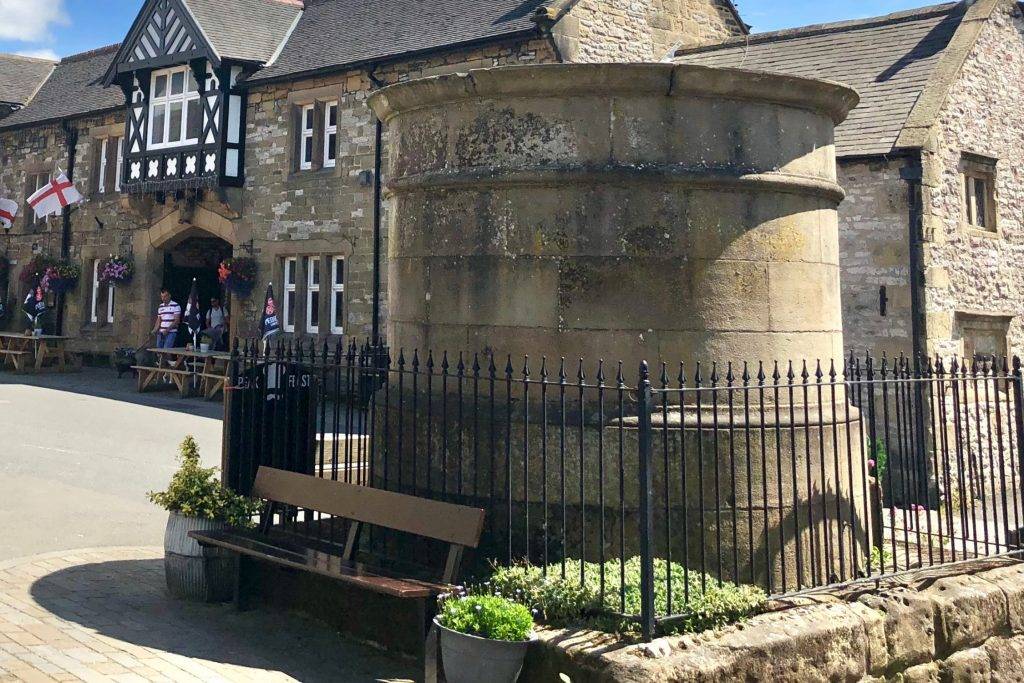
What’s in a name?
Youlgreave is referred to in the Domesday Book of 1086 as ‘Giolgrove’, most likely meaning ‘Yellow Grove’, a reference to the yellow ore that was mined locally.
From such clear beginnings, however, Youlgreave is now one of the most misspelt village names in the area, if not the country, and there are no less than 60 different recorded spellings of the name. The road sign on entering the village uses the spelling ‘Youlgreave’, although the Highways Agency use ‘Youlgrave’ on a number of different local signposts throughout the area. Most locals also use ‘Youlgrave’, although the official name on Ordnance Survey maps is ‘Youlgreave’.
Youlgreave Today
Today, Youlgreave is a lively, bustling village, with a range of shops, cafés, three pubs, a Post Office, and the afore-mentioned Youth Hostel.

The village hosts an annual and increasingly popular music and art festival, the Youlgreave Festival, founded in 2001. The elaborate Well Dressings are displayed in June every year, and are always a beautiful and deservedly popular attraction.

For a great place to eat or stay overnight when visiting Youlgreave, call in at Farmyard Inn in the heart of the village. It serves delicious home-cooked food and has four spacious, comfortable guest rooms available on a Bed & Breakfast basis.
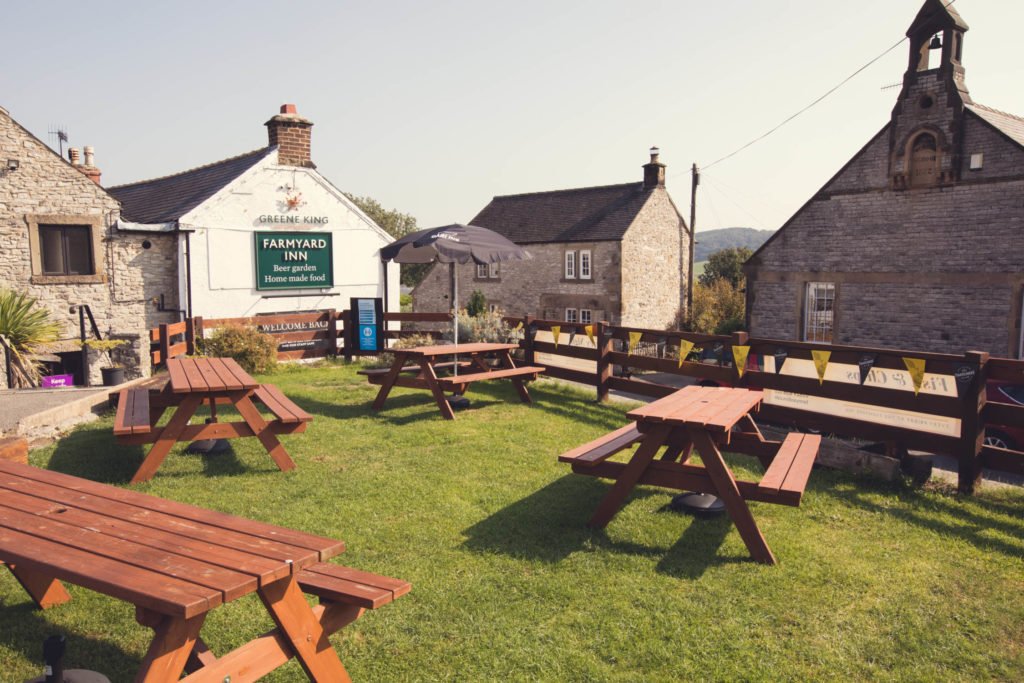
Youlgreave Walks
This is perfect walking country, and there are numerous footpaths in every direction criss-crossing the wonderful countryside around Youlgreave. The long-distance walking routes of the Limestone Way and the White Peak Way both pass through the village.
If you want to explore this beautiful part of the Peak District for yourself, why not try our lovely Youlgreave Walk via Lathkill Dale (7.6 miles)?!



